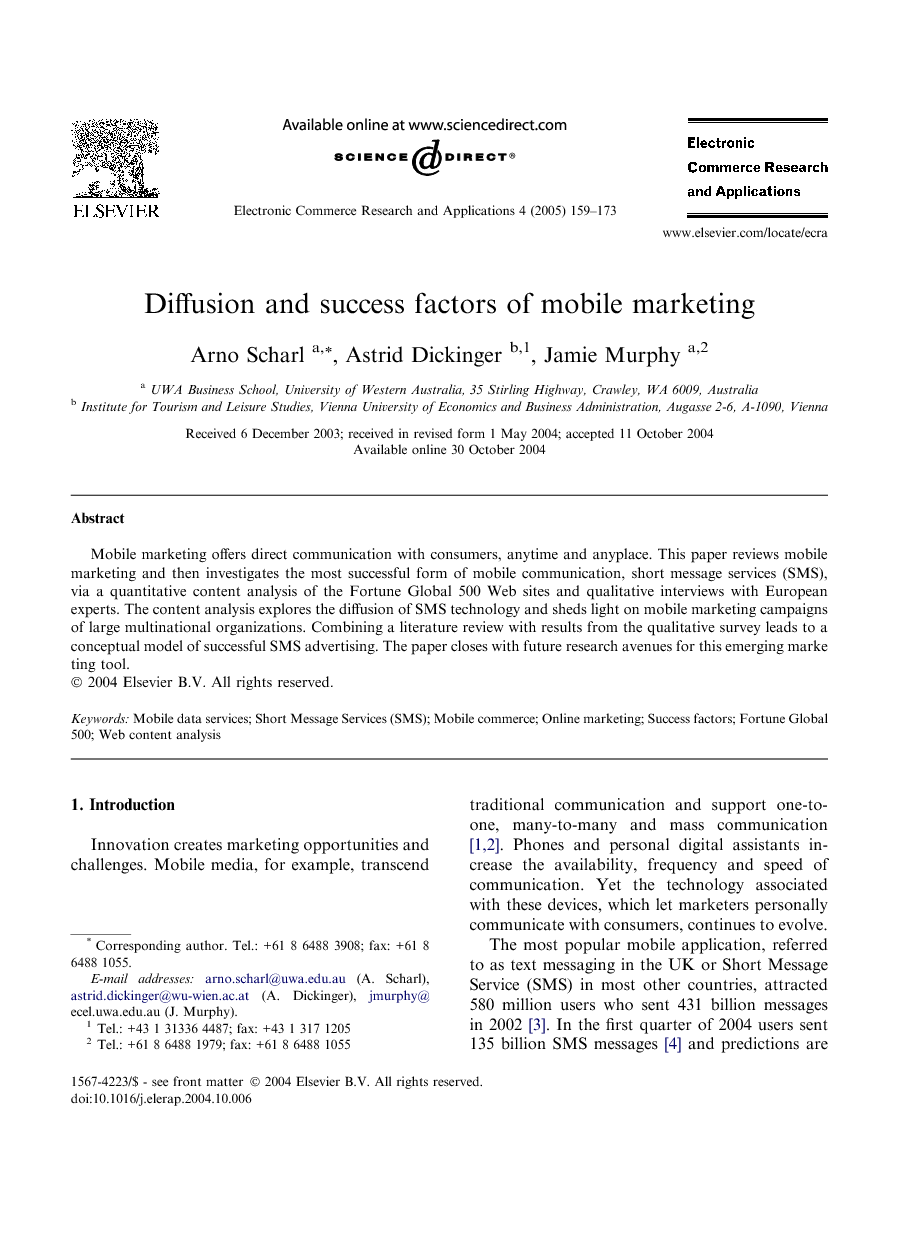ترجمه فارسی عنوان مقاله
انتشار و موفقیت عوامل بازاریابی تلفن همراه
عنوان انگلیسی
Diffusion and success factors of mobile marketing
| کد مقاله | سال انتشار | تعداد صفحات مقاله انگلیسی |
|---|---|---|
| 23592 | 2005 | 15 صفحه PDF |
منبع

Publisher : Elsevier - Science Direct (الزویر - ساینس دایرکت)
Journal : Electronic Commerce Research and Applications, Volume 4, Issue 2, Summer 2005, Pages 159–173
ترجمه کلمات کلیدی
- () 500 خدمات اطلاعات تلفن همراه - خدمات پیام کوتاه - تجارت تلفن همراه - بازاریابی آنلاین - عوامل موفقیت - ثروت جهانی 500 - تجزیه و تحلیل محتوای وب سایت
کلمات کلیدی انگلیسی
Mobile data services,Short Message Services (SMS),Mobile commerce,Online marketing,Success factors,Fortune Global 500,Web content analysis

